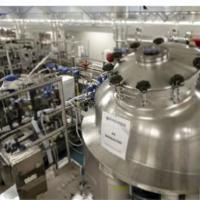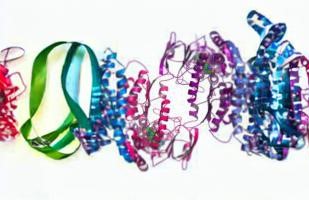The Challenges of CMC in Cell and Gene Therapies
 6 years ago
By Josh Neil
6 years ago
By Josh Neil

Safety is one of the most important aspects of drug development. The need for a drug to be efficacious, consistent and non-harmful to humans is vital for its success. And where a treatment is new, highly variable, and can involve introducing viral vectors into the human body, safety must be ensured more than ever.
The chemistry, manufacturing and controls (CMC) processes are key to ensuring at every stage that a drug is safe and effective. But given the novelty and variability of cell and gene therapies, what challenges does CMC face in this field?
Ahead of our CMC / Regulatory Affairs online Strategy Meeting on 2/3 June, we looked more at the challenges of CMC in cell and gene therapies.
Cell and Gene Therapies
Cell and gene therapies (CGTs) are two distinct but overlapping treatments in modern medicine, whose potential is only now beginning to be fully explored. In both cases, cells are extracted either from a patient (autologous approach) or from a healthy donor (allogeneic approach). They are then altered to contain a corrected or modified version of the damaged genes, and returned to the patient’s body. There they will propagate and hopefully solve the issue. As a result of this method, CGTs have the potential to be extremely long-lasting solutions. Some require only one or two treatments in a lifetime.
So far, CGTs have been used primarily to treat rare and currently untreatable diseases, such as motor neuron disease and some types of cancer. Their efficacy can be excellent: One treatment for B-cell acute lymphoblastic leukaemia showed an 83% remission rate after three months.
As with any new treatment, a number of difficulties have arisen around the development and manufacture of CGTs. These range from development to manufacture, and include:
– design of facilities, as the single-use and highly bespoke nature of CGTs reduces a number of standard processes to redundancy
– a much more complex supply train, in which a number of biological elements must be tracked, monitored and kept safe at the same time
– additional training for healthcare staff, who must learn new CGT methods and techniques
– the development of new payment models to deal with the high cost of CGTs and their more specialised targets
The Regulatory Challenge for CMC
But it is in the CMC arena that CGT is facing one of its most difficult challenges. The area’s natural need for flexibility and adaptability could potentially be solved by a strong risk-based CMC framework. But this is only recently appearing, both in the U.S. and within the European Union. In addition to this, the grant of breakthrough and ‘Regenerative Medicine Advanced Therapy’ status to a number of CGTs means that any CMC development process is sped up, causing further issues.
The newness of CGT is not, however, an excuse for reduced CMC compliance. The FDA has stated that by phase 2 of a CGT study there is increasing expectation for product characterisation and compliance with cGMPs. For licensure, full compliance with all applicable regulations is required. The FDA expectations for late-stage product development include having:
– sufficient manufacturing experience to narrow acceptance limits
– a controlled manufacturing process and planning for future scale-up
– a biologically relevant potency assay
The FDA released CMC guidelines for CGT manufacturing in January 2020. This covers CMC expectations for both early-stage and late-stage product development, as well as accelerating product developments through the FDA.
To get around the sparsity of firm CMC frameworks, greater awareness of the current situation and better communication must occur. All parties must take care to share knowledge as early in the process as possible, to determine where quality/clinical connections are, and how to manage potential risks as they occur.
More information on CMC requirements for CGT IND applications can be found here.
Manufacturing Challenges for CMC in CGT
Across manufacturing, CGT faces issues that hinder CMC. An incomplete understanding of some therapies’ mechanism of action means data is limited. This in turn makes it more difficult to link clinical outcomes to critical quality attributes and process control parameters.
Additionally, the inherent variability of starting materials, changing from patient to patient, can affect process performance and efficacy of the final product. Other problems in manufacturing include:
– The need for segregating products in facilities, and the numerous inherent safety risks of viral vectors and (often-manual) work during manufacturing
– The short shelf-life of sampling, which can impact release testing strategies
– Accelerated approval pathways negatively impacting manufacturing timescales and process design
– Difficulty during comparability exercises based on lack of data
Facility-specific safety challenges can be solved by giving significant thought to facility design, staff training and chain of custody procedures for any manual steps in the process. For those processes which do not need manual work, closed systems and automation are highly recommended to reduce cost, increase safety and limit error.
Regarding comparability, one solution is to create process development and technology transfer procedures suitably early in production as a vital part of the life-cycle. Creating suitable analytical methods to assess batches of products can allow comparability of a product before and after changes to a batch.
Other Challenges for CMC in CGT
Legislation and guidance are not the only area pharma companies must be aware of. Selection of raw materials is a particular challenge when such a degree of variability exists in extracted biologics. Poor or unlucky selection will become a particular problem later in the process, reducing efficacy or potentially harming the patient. To combat this issue, high-grade materials should be ascertained and used.
This issue is further compounded by the lack of clarity surrounding the terminology for ‘‘raw materials’. In the U.S., raw materials can include starting materials, ingredients, reagents, processing aids and many other ingredients. There is a disparity between the United States and stedEurope around what exactly ‘ancillary materials’ covers as a term.
Beyond this, a number of other challenges exist around raw materials, including the potential variability and risk of using animal-derived materials, the use of Research Use Only materials such as growth factors that are labelled ‘not for clinical use, for research purposes only’, and the lack of simple characterisation tests for many raw materials. With every challenge, a risk-based approach to assessing and using raw materials is suggested, as detailed in USP Chapter 1043 and European Pharmacopoeia General Chapter 5.2.12.
Another challenge is the need for versatility where novel products are being created. The diversity of CGTs means that often, standard practices and processes will not work – for example, some viral vectors are too large or sensitive for terminal sterile filtration, a necessary part of purification. To surmount such an issue, companies must determine the best possible alternative, using risk- and science-based justifications for new control strategies.
Seeking Regulatory Approval
Regulator feedback on product development strategies is enormously helpful for winning product approval. Pre-IND meetings can be a source of understanding and collaboration that can hugely improve CMC efforts early on in the development process. Where guidance does not cover certain issues, regulators can assist companies who show that they are aware of potential gaps in knowledge and are eager to address them.
Analytical methodology is a useful area to receive feedback on, especially where a CGT’s mechanism of action may not be fully understood. Companies must take all possible chances to ensure methodologies are sufficient for the current stage of development, and that if the mechanism of action isn’t known that surrogate assays can be utilised for further insight. Regulators can help with this by recommending particular attributes to evaluate.
Keep an eye out for Proventa International’s upcoming Biomanufacturing White Paper, looking at the challenges surrounding CGT Manufacturing and their possible solutions.
Joshua Neil, Editor
Proventa International
To ensure you remain up-to-date on the latest in clinical development, sign up for Proventa International’s online Clinical Operations, Supply Chain & Pharmacovigilance Strategy Meeting 2020.

Enhancing Pharma Manufacturing Efficiency through Advanced Automation
In today's fast-paced pharmaceutical industry, efficiency plays a critical role in meeting the increasing demands for drugs and medical products. To achieve optimal efficiency, pharmaceutical manufacturers are turning to advanced automation solutions. Advanced automation encompasses cutting-edge technologies like robotics, artificial...
2 years agoEnhancing Pharma Manufacturing Efficiency through Advanced Automation
In today's fast-paced pharmaceutical industry, efficiency plays a critical role in meeting the increasing demands for drugs and medical products. To achieve optimal efficiency, pharmaceutical manufacturers are turning to advanced automation solutions. Advanced automation encompasses cutting-edge technologies like robotics, artificial...
2 years ago
Improving Warehouse Efficiency: The Role of Technology and Best Practices
In the fast-paced world of supply chain management, warehouse efficiency plays a pivotal role in ensuring timely and accurate order fulfillment while minimizing costs. With the rising demands of e-commerce and globalization, businesses are continually seeking innovative ways to optimize...
2 years agoImproving Warehouse Efficiency: The Role of Technology and Best Practices
In the fast-paced world of supply chain management, warehouse efficiency plays a pivotal role in ensuring timely and accurate order fulfillment while minimizing costs. With the rising demands of e-commerce and globalization, businesses are continually seeking innovative ways to optimize...
2 years ago
DeepMind’s AI Predicts Structures for More Than 350,000 Proteins
In 2003, researchers sequenced approximately 92% of the human genome, a huge achievement and very recently researchers have completed the entire process. Now, the latest innovation in AI technology has predicted the structure of nearly the entire human proteome. The...
4 years agoDeepMind’s AI Predicts Structures for More Than 350,000 Proteins
In 2003, researchers sequenced approximately 92% of the human genome, a huge achievement and very recently researchers have completed the entire process. Now, the latest innovation in AI technology has predicted the structure of nearly the entire human proteome. The...
4 years ago